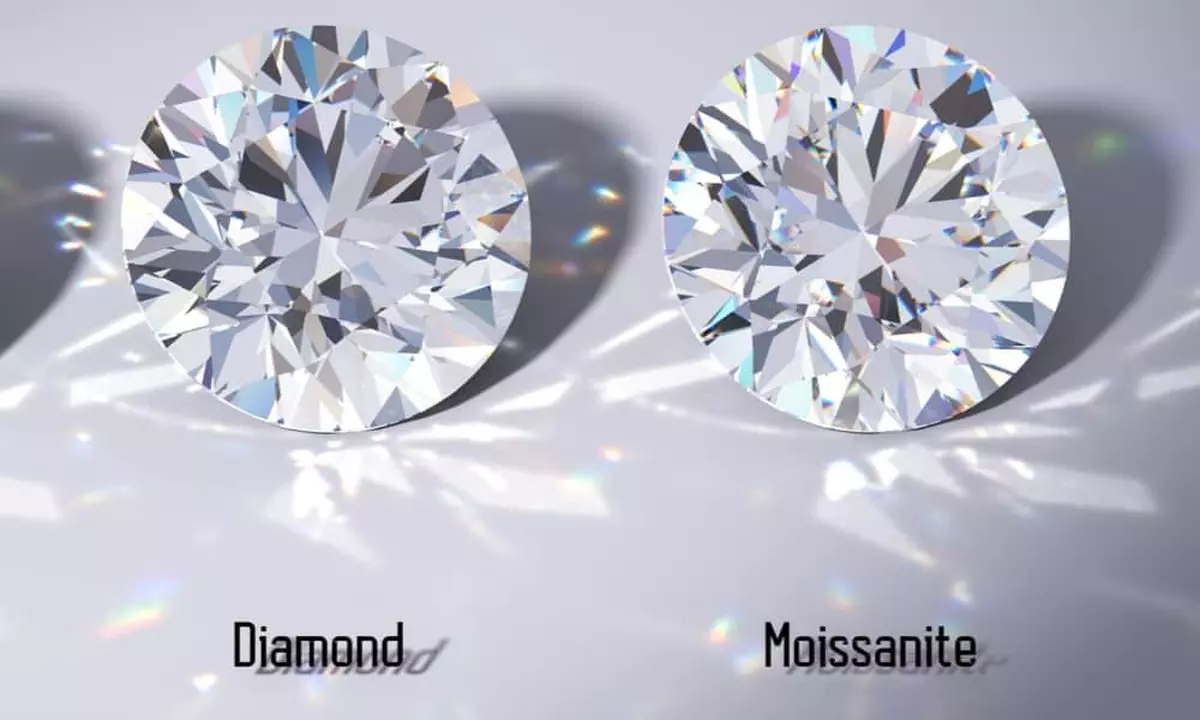
Moissanite vs diamond – a long debate. Both are beautiful and durable gemstones, both popular choices for engagement rings and other fine jewellery, but they have some differences in their physical and optical properties.
Here are some of the key differences between moissanite and diamond:
- Brilliance and fire: Moissanite has a higher refractive index than diamond, which means that it reflects more light and has more “fire” or rainbow-coloured flashes. Some people prefer the look of moissanite for this reason, as it can appear more sparkly and lively.
- Hardness: Diamond is the hardest natural substance on Earth, with a rating of 10 on the Mohs scale of hardness. Moissanite is also very hard, with a rating of 9.25. This means that both gemstones are very durable and resistant to scratches and damage.
- Colour: Diamond is usually colourless, but can also come in a range of colours such as yellow, pink, and blue. Moissanite is also usually colourless, but can sometimes have a slight yellow or green tint. Some people prefer the colourless appearance of diamond, while others prefer the slightly warmer tone of moissanite.
- Price: Moissanite is generally less expensive than diamond, as it is produced in a laboratory and is not as rare as natural diamonds. This makes it a good option for those who want a high-quality gemstone at a more affordable price.
- Ethics and sustainability: Moissanite is a lab-grown gemstone, which means that it is a more ethical and sustainable choice than mined diamonds. However, some people still prefer the prestige and tradition associated with natural diamonds.
- Origin: Diamonds are a naturally occurring gemstone that are formed deep within the earth over millions of years. Moissanite, on the other hand, is a lab-created gemstone that was first discovered in a meteorite in 1893 and can now be synthesised in a laboratory.
Diamonds are naturally occurring gemstones that are formed deep within the Earth’s mantle under extreme heat and pressure. They are made of carbon atoms that have been arranged in a specific crystal structure, and can take millions of years to form. Diamonds are typically mined from deep underground mines or from alluvial deposits in riverbeds and other natural settings.
Moissanite, on the other hand, is a lab-created gemstone that was first discovered in a meteorite by French scientist Henri Moissan in 1893. Moissanite does not occur naturally on Earth, so all moissanite used in jewellery is produced in a laboratory. To create moissanite, silicon carbide is heated to very high temperatures and then cooled to form crystals that can be cut and polished like a gemstone.
While diamonds have a long history and cultural significance, moissanite is a relatively new and innovative gemstone that has gained popularity in recent years. Both diamonds and moissanite have unique properties and characteristics that make them popular choices for fine jewellery, and ultimately the choice between them depends on personal preference and values.
Overall, the choice between moissanite and diamond comes down to personal preference and priorities. Both gemstones are beautiful and have their own unique characteristics, so it’s important to choose the one that feels right for you.
